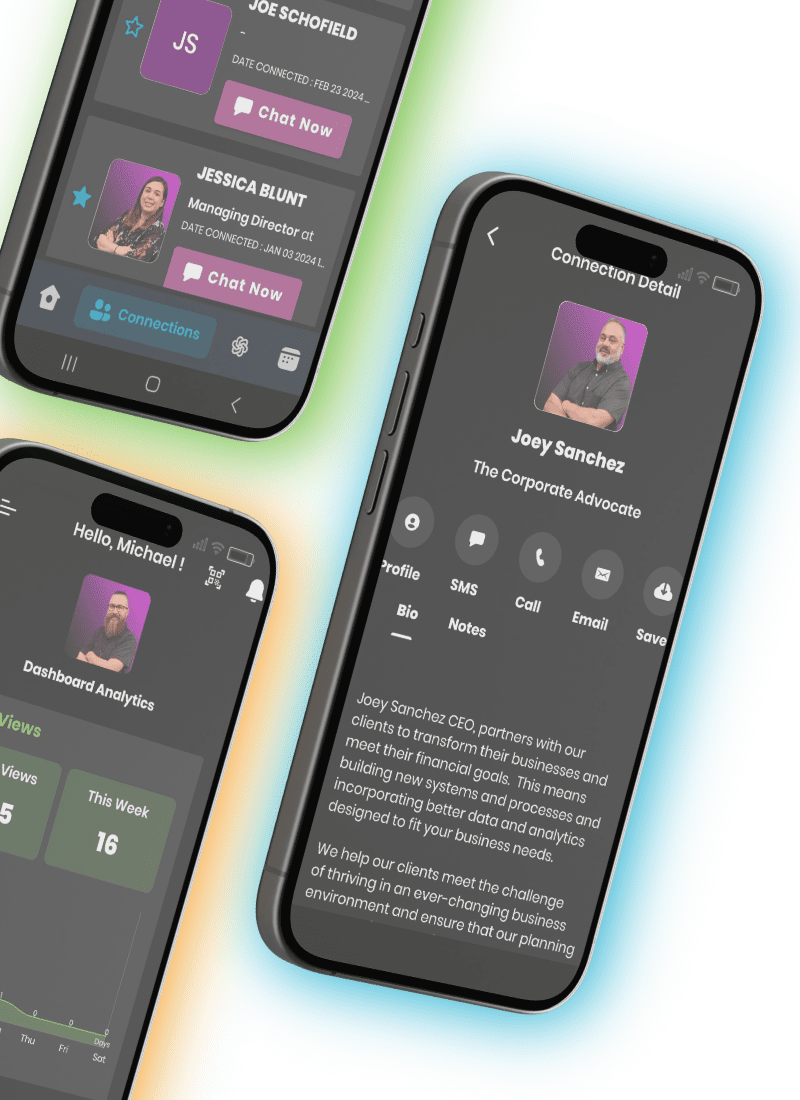In the wake of global shifts towards digital connectivity, virtual networking events have surged to the forefront of professional interaction. What was once a niche alternative has now become a cornerstone of career development and business growth. This digital transformation has reshaped how professionals connect, collaborate, and build relationships, making it crucial for individuals to adapt their networking skills to these new online environments.
The landscape of networking has evolved dramatically. Traditional handshakes and business card exchanges have given way to video calls, digital breakout rooms, and virtual coffee chats. This shift brings both challenges and opportunities. While the ease of access and global reach of virtual events offer unprecedented networking potential, they also require a new set of skills and strategies to navigate effectively.
For professionals across industries, mastering virtual networking is no longer optional—it’s essential. Whether you’re a seasoned networker adapting to the digital realm or a newcomer looking to build connections in an increasingly online world, understanding how to maximize opportunities in virtual networking events is key to professional success.
This guide will explore effective strategies to help you thrive in virtual networking environments. From preparation and engagement techniques to follow-up practices and overcoming common challenges, we’ll provide you with a comprehensive roadmap to transform your virtual networking experience. By implementing these strategies, you’ll be well-equipped to forge meaningful connections, expand your professional network, and unlock new opportunities in the digital age.
As we delve into the world of virtual networking, remember that the core principles of building relationships remain the same. It’s the methods and tools that have changed. With the right approach, virtual networking events can be just as impactful—if not more so—than their in-person counterparts. Let’s explore how to make the most of these digital opportunities and elevate your networking game in the virtual sphere.
Understanding Virtual Networking Events
As virtual networking becomes increasingly prevalent, it’s crucial to understand the various forms it can take and how it differs from traditional in-person networking. This knowledge will help you navigate these digital spaces more effectively and make the most of the opportunities they present.
Types of Virtual Networking Events
Virtual networking events come in various formats, each with its own unique characteristics and opportunities:
- Webinars: These online seminars often feature expert speakers and include Q&A sessions, providing opportunities to learn and connect with industry leaders.
- Online Conferences: Digital versions of traditional conferences, these events often include keynote speeches, breakout sessions, and virtual exhibition halls.
- Virtual Meetups: More casual in nature, these events typically focus on specific topics or industries and encourage open discussion among participants.
- Networking Happy Hours: These social events aim to recreate the casual atmosphere of in-person networking mixers in a virtual setting.
- Industry-Specific Online Forums: Ongoing platforms where professionals can engage in discussions, share insights, and build connections over time.
Key Differences Between In-Person and Virtual Networking
While the core goal of networking remains the same, virtual events differ from in-person networking in several key ways:
- Physical Cues: Virtual networking lacks the non-verbal cues and body language that we often rely on in face-to-face interactions.
- Technological Mediation: All interactions are mediated through technology, which can both facilitate and hinder communication.
- Geographical Reach: Virtual events can connect professionals from around the world, expanding networking opportunities beyond local boundaries.
- Time Management: Virtual events often have more structured timelines and formats compared to the fluid nature of in-person networking.
- Multitasking Temptations: The online environment can make it easier to become distracted or attempt to multitask during networking events.
Benefits and Challenges of Virtual Networking
Virtual networking offers unique advantages but also presents specific challenges that professionals need to navigate:
Benefits:
- Increased accessibility and convenience
- Cost-effective participation without travel expenses
- Opportunity to connect with a global network of professionals
- Easy recording and revisiting of event content
- Enhanced ability to research and prepare for interactions
Challenges:
- Potential for technical difficulties or connectivity issues
- Harder to build rapport and read social cues in a virtual environment
- ‘Zoom fatigue’ or digital burnout from extended screen time
- Difficulty in standing out or making memorable impressions in large virtual gatherings
- Balancing professional and personal life when networking from home
Understanding these aspects of virtual networking events will help you approach them with the right mindset and strategies. By recognizing the unique characteristics of digital networking, you can adapt your approach to maximize the benefits and overcome the challenges, setting yourself up for success in the virtual networking landscape.
Preparing for Virtual Networking Success
Success in virtual networking events often hinges on thorough preparation. By setting the stage correctly, you can ensure a smooth and professional experience that allows you to focus on making meaningful connections.
Setting Up Your Digital Workspace
Creating an ideal digital workspace is crucial for effective virtual networking:
- Choose a quiet, well-lit area with minimal background distractions.
- Ensure your internet connection is stable and fast enough for video calls.
- Use a comfortable chair and position your camera at eye level for natural conversations.
- Consider using a virtual background if your physical space isn’t ideal, but ensure it looks professional.
Testing and Familiarizing Yourself with the Event Platform
Each virtual event platform has its unique features. To avoid technical hiccups:
- Install the required software well in advance and create your account if necessary.
- Explore the platform’s features, such as chat functions, breakout rooms, and networking tools.
- Participate in any pre-event orientation sessions offered by the organizers.
- Conduct a test run with a friend or colleague to ensure your audio and video are working correctly.
Crafting a Compelling Online Presence
Your virtual appearance and profile are your first impression in online events:
- Update your professional headshot and ensure it’s clear and friendly.
- Craft a concise, engaging bio that highlights your expertise and interests.
- Choose appropriate, professional attire that looks good on camera.
- Set up proper lighting: natural light from a window or a ring light can greatly enhance your appearance.
- Ensure your background (virtual or real) is tidy and professional.
Preparing Your Elevator Pitch for Virtual Delivery
Adapting your elevator pitch for virtual settings is essential:
- Keep it brief (30 seconds or less) and focused on your unique value proposition.
- Practice delivering it naturally to your camera, maintaining eye contact.
- Incorporate a ‘hook’ or interesting fact that can spark further conversation.
- Prepare variations of your pitch for different contexts within the event.
- Consider having a digital ‘leave-behind,’ such as a link to your professional profile or portfolio.
By meticulously preparing these aspects, you set yourself up for a successful virtual networking experience. Remember, in the digital realm, your preparation directly impacts your ability to engage effectively and make lasting impressions. With these elements in place, you can confidently navigate virtual events, focusing on building meaningful professional relationships rather than worrying about technical or presentational issues.
Engagement Strategies During Virtual Events
Active engagement is key to making the most of virtual networking events. By employing strategic participation techniques, you can stand out, make meaningful connections, and derive maximum value from these digital gatherings.
Active Participation in Chat Rooms and Discussion Boards
Chat rooms and discussion boards are hubs of activity during virtual events. To leverage these effectively:
- Introduce yourself early in the chat, sharing your name, role, and what you hope to gain from the event.
- Contribute relevant insights or ask thoughtful questions about the ongoing discussion.
- Respond to others’ comments to initiate one-on-one conversations.
- Share useful resources or links that add value to the discussion, but avoid self-promotion.
- Use the private messaging feature judiciously to connect with individuals who share your interests.
Effective Use of Video Conferencing Features
Most virtual event platforms offer interactive features that can enhance your engagement:
- Use the ‘raise hand’ feature to indicate when you have a question or comment.
- Utilize reaction buttons (like thumbs up or applause) to show agreement or appreciation.
- Keep your video on when possible to maintain a personal connection with other attendees.
- Use the background blur feature if you’re in a less-than-ideal setting.
- Familiarize yourself with screen sharing in case you need to present or share information.
Asking Thoughtful Questions During Q&A Sessions
Q&A sessions are prime opportunities to engage with speakers and demonstrate your interest:
- Prepare questions in advance based on the event agenda or speaker bios.
- Frame your questions to be concise, specific, and relevant to the topic at hand.
- If possible, relate your question to your own experience or a current industry challenge.
- Follow up on answers with a brief comment or thank you in the chat.
- Be ready to unmute quickly if called upon to ask your question verbally.
Networking in Virtual Breakout Rooms
Breakout rooms offer more intimate networking opportunities:
- Be prepared to introduce yourself succinctly when entering a breakout room.
- Actively listen to others and find common ground or shared interests.
- Contribute to the conversation but be mindful not to dominate it.
- Use the limited time efficiently by exchanging contact information with those you’d like to follow up with.
- Take notes on key points or interesting contacts for post-event follow-up.
- If the platform allows, use features like collaborative whiteboards to engage in group activities.
By implementing these engagement strategies, you can transform passive attendance into active participation. Remember, the goal is not just to be present, but to be memorable and to forge genuine connections. Virtual events may lack the physical presence of traditional networking, but with these techniques, you can create impactful interactions that lead to valuable professional relationships.
Making Meaningful Connections in a Virtual Setting
While virtual networking events offer unique opportunities to connect with professionals worldwide, creating genuine connections in a digital environment can be challenging. However, with the right approach, you can forge meaningful relationships that extend beyond the virtual realm.
Initiating and Maintaining Conversations Online
Starting and sustaining engaging conversations in a virtual setting requires a thoughtful approach:
- Begin with a personalized greeting that references shared interests or event topics.
- Use open-ended questions to encourage deeper discussions beyond surface-level small talk.
- Share brief anecdotes or experiences related to the conversation topic to build rapport.
- Be mindful of the chat’s pace and tone, adapting your communication style accordingly.
- Follow up on interesting points made by others to show you’re actively engaged.
- Use emojis or GIFs sparingly to add personality to your messages, when appropriate.
Techniques for Active Listening in Digital Environments
Active listening is crucial for building connections, even in virtual spaces:
- Focus entirely on the speaker, minimizing distractions in your environment.
- Use visual cues like nodding or smiling to show you’re engaged, especially in video calls.
- Take brief notes to remember key points and ask informed follow-up questions.
- Paraphrase or summarize what you’ve heard to ensure understanding and show attentiveness.
- Be patient with pauses or delays, which are common in digital communication.
- Respond with thoughtful comments that demonstrate you’ve processed the information shared.
Sharing Resources and Value-Added Content
Offering valuable resources can set you apart and create opportunities for further engagement:
- Share relevant articles, whitepapers, or industry reports that align with discussion topics.
- Offer to connect others with professionals in your network who might be helpful to them.
- Provide insights from your own experience that could benefit others in the conversation.
- Use screen sharing features to present brief, valuable content when appropriate.
- Follow up after the event with promised resources or additional information.
Overcoming Awkwardness and Creating Genuine Connections
Virtual environments can feel impersonal, but there are ways to break through the digital barrier:
- Be authentic and show your personality; don’t be afraid to be human and relatable.
- Address technical issues or awkward moments with humor and grace.
- Look for common ground beyond professional interests, such as shared hobbies or experiences.
- Use storytelling techniques to make your points more engaging and memorable.
- Suggest continuing the conversation beyond the event through LinkedIn or a virtual coffee chat.
- Be genuinely interested in others; ask about their goals, challenges, and successes.
- Offer help or support where you can, without expectation of immediate return.
Remember, building meaningful connections takes time and effort, whether in-person or virtual. By approaching virtual networking with authenticity, active engagement, and a willingness to provide value to others, you can create lasting professional relationships that transcend the digital divide. The connections you make in these virtual settings can become valuable parts of your professional network, leading to collaborations, opportunities, and mutual growth in the long term.
Leveraging Digital Tools for Enhanced Networking
In the digital age, a myriad of tools and platforms can significantly enhance your virtual networking experience. By strategically utilizing these resources, you can maximize the impact of your networking efforts and build a more robust professional network.
Utilizing Social Media Platforms Alongside Virtual Events
Social media can be a powerful complement to virtual networking events:
- Use LinkedIn to research speakers and attendees before the event, identifying potential connections.
- Live-tweet key insights during the event using the official event hashtag to engage with a broader audience.
- Share your participation on professional social media platforms to attract like-minded professionals.
- Join relevant LinkedIn or Facebook groups associated with the event or industry for continued networking.
- Use Instagram or TikTok to share behind-the-scenes content or quick tips related to the event, especially if you’re a content creator.
Digital Business Card Exchanges and Contact Management
Efficient contact exchange and management are crucial for effective follow-ups:
- Utilize digital business card apps that allow quick sharing of contact information via QR codes or links.
- Set up a system for tagging and categorizing new contacts based on interests, potential collaborations, or follow-up actions.
- Use CRM (Customer Relationship Management) tools to track interactions and set reminders for follow-ups.
- Consider creating a personalized landing page that aggregates your professional information and social media links.
Note-Taking and Information Organization Tools
Capturing and organizing information effectively can set the foundation for meaningful follow-ups:
- Use note-taking apps like Evernote or OneNote to jot down key points, action items, and potential collaboration ideas.
- Try mind-mapping tools to visually organize concepts and connections made during the event.
- Utilize voice-to-text features for quick note-taking during live sessions.
- Set up a system to categorize notes by event, topic, or potential opportunity for easy reference later.
How SyncVIP Can Streamline Your Virtual Networking Efforts
SyncVIP offers several features that can enhance your virtual networking experience:
- Create a comprehensive professional profile that showcases your skills and accomplishments, making it easy for potential connections to learn about you.
- Utilize SyncVIP’s targeted filters and recommendations to find relevant professionals aligned with your networking goals.
- Leverage the platform’s integration with existing social media to import and manage your contacts efficiently.
- Use SyncVIP’s scheduling feature to easily set up follow-up meetings or virtual coffee chats with new connections.
- Take advantage of the AI-powered text summaries for concise meeting notes, helping you remember key points from your networking conversations.
- Share your SyncVIP profile across social media platforms to expand your reach and make it easy for others to connect with you.
Download The Ultimate Guide to Building Your VIP Network Now!
Learn what it takes to transform casual connections into VIP relationships.
Building a strong network packed with valuable connections is key to career success. But how do you attract the right people and transform connections into lasting relationships?
Our free guide, "The Ultimate Guide to Building Your VIP Network," provides actionable strategies to help you:
- Craft your ideal VIP profile: Target the connections that truly matter for your goals.
- Master the art of connection: Make powerful first impressions and build rapport.
- Nurture relationships for long-term success: Turn casual encounters into valuable VIP connections.
Download your free copy today and start building your VIP network!
By leveraging these digital tools and platforms, including SyncVIP, you can create a more organized, efficient, and effective virtual networking strategy. These tools not only help you manage connections and information during events but also facilitate ongoing relationship-building long after the virtual event has ended. Remember, the key is to use these tools in a way that enhances, rather than replaces, genuine human interaction. With the right balance of technology and personal touch, you can build a powerful professional network in the digital landscape.
Following Up After Virtual Events
The true value of networking often emerges after the event concludes. Effective follow-up can transform brief virtual encounters into lasting professional relationships. Here’s how to make the most of your post-event actions.
Best Practices for Post-Event Communication
Timely and thoughtful follow-up is crucial for solidifying new connections:
- Reach out within 24-48 hours while the interaction is still fresh in both parties’ minds.
- Personalize your message by referencing specific conversation points from the event.
- Express gratitude for the connection and highlight any insights you gained from the interaction.
- Be clear about your intention for future communication or collaboration.
- Keep your initial follow-up concise, respecting the other person’s time.
- Include your contact information and professional social media profiles for easy reference.
Nurturing New Connections Through Digital Means
Building relationships requires ongoing effort, especially in a virtual environment:
- Connect on professional social media platforms, particularly LinkedIn, to stay updated on each other’s activities.
- Share relevant content or industry news that might interest your new connections.
- Offer help or resources related to topics discussed during your initial interaction.
- Consider setting up virtual coffee chats or informational interviews to deepen the relationship.
- Use SyncVIP’s scheduling feature to easily arrange follow-up meetings, ensuring you maintain regular contact with valuable connections.
- Engage with their social media content through thoughtful comments or shares.
- Look for opportunities to make introductions or connections that could benefit your new contact.
Joining and Engaging in Online Communities Related to the Event
Extend the networking experience by participating in relevant online communities:
- Join LinkedIn groups or other professional forums mentioned during the event.
- Actively participate in discussions, sharing your expertise and insights.
- Start threads about topics discussed at the event to continue the conversation.
- Share key takeaways from the event with the community, adding your own perspective.
- Look for opportunities to collaborate on projects or initiatives with community members.
- Attend regular virtual meetups or webinars organized by these communities to maintain engagement.
- Use these platforms to showcase your thought leadership and build your professional brand.
Remember, effective follow-up is about building genuine relationships, not just expanding your contact list. Each interaction should aim to provide value, whether through shared knowledge, resources, or opportunities. By consistently nurturing these connections and engaging in relevant communities, you’ll create a dynamic, supportive professional network that extends far beyond the initial virtual event.
Overcoming Common Virtual Networking Challenges
While virtual networking offers numerous benefits, it also presents unique challenges. Recognizing and addressing these obstacles can significantly enhance your online networking experience and outcomes.
Dealing with Technical Difficulties
Technical issues can disrupt your networking flow, but being prepared can minimize their impact:
- Always test your audio, video, and internet connection before joining an event.
- Have a backup internet source ready, such as a mobile hotspot.
- Familiarize yourself with the mute/unmute and video on/off controls for quick troubleshooting.
- Keep technical support contact information handy for the platform you’re using.
- If you encounter issues, stay calm and professional. Briefly explain the problem and try to rejoin or continue via chat if necessary.
- Consider using a reliable, all-in-one platform like SyncVIP that integrates various networking features to reduce the likelihood of technical complications.
Managing Screen Fatigue and Maintaining Focus
Extended screen time can lead to fatigue and decreased engagement:
- Take regular breaks between sessions or conversations to rest your eyes and stretch.
- Use the 20-20-20 rule: Every 20 minutes, look at something 20 feet away for 20 seconds.
- Adjust your screen settings to reduce blue light exposure, especially during evening events.
- Stay hydrated and maintain good posture to help sustain energy levels.
- Use physical note-taking to give your eyes a break from the screen and help maintain focus.
- If possible, alternate between sitting and standing during longer events to stay alert.
Standing Out in a Crowded Virtual Environment
Making a memorable impression in a sea of virtual attendees can be challenging:
- Craft a concise, compelling introduction that highlights your unique value proposition.
- Actively participate in discussions with thoughtful questions and insights.
- Use your video background strategically – a clean, professional setting or a subtle branded background can make you more memorable.
- Follow up promptly with personalized messages to solidify connections.
- Share relevant content or resources during the event to demonstrate your expertise.
- Utilize features like virtual business cards or profile links (available on platforms like SyncVIP) to make it easy for others to remember and connect with you.
Balancing Personal and Professional Boundaries Online
The line between personal and professional life can blur in virtual settings:
- Set clear boundaries for your availability and communicate them politely.
- Create a dedicated space for virtual networking to mentally separate it from your personal life.
- Be mindful of what’s visible in your background during video calls.
- Manage your online presence carefully, ensuring your professional profiles are distinct from personal ones.
- Use privacy settings on social media to control what professional contacts can see.
- Be authentic but maintain a level of professionalism appropriate for your industry.
- Consider using a platform like SyncVIP that allows you to create a professional profile separate from personal social media accounts.
By addressing these common challenges head-on, you can navigate virtual networking environments more effectively. Remember, everyone is adapting to this new landscape of digital interaction. Patience, preparation, and a positive attitude will go a long way in helping you overcome obstacles and make the most of your virtual networking opportunities. With practice, you’ll find your rhythm in the digital networking world, turning challenges into opportunities for growth and connection.
Measuring Your Virtual Networking Success
To truly excel in virtual networking, it’s crucial to assess your efforts and outcomes systematically. By setting clear goals, tracking your progress, and refining your approach, you can continuously improve your virtual networking strategy.
Setting Goals for Virtual Networking Events
Establishing clear, measurable objectives helps focus your efforts and provides a benchmark for success:
- Define specific, achievable goals for each event (e.g., make five new relevant connections, identify three potential collaboration opportunities).
- Set both quantitative (number of new contacts) and qualitative (depth of conversations) targets.
- Align your networking goals with broader professional or business objectives.
- Create a mix of short-term (event-specific) and long-term (relationship-building) goals.
- Be realistic about what you can achieve in a virtual setting, considering time constraints and platform limitations.
Tracking and Analyzing Your Online Networking Efforts
Systematic tracking allows you to gauge the effectiveness of your networking activities:
- Maintain a detailed log of events attended, connections made, and follow-up actions taken.
- Use spreadsheets or CRM tools to organize contact information and interaction notes.
- Monitor the growth and engagement of your professional social media networks.
- Track the conversion of virtual connections to meaningful professional relationships or opportunities.
- Utilize analytics tools provided by networking platforms to gain insights into your engagement levels and connection patterns.
- For SyncVIP users, leverage the platform’s analytics features to track profile views, interaction rates, and the effectiveness of your digital networking assets.
Adjusting Strategies Based on Outcomes and Feedback
Regular evaluation and adaptation are key to improving your virtual networking skills:
- Review your goals and achievements after each event to identify areas of success and improvement.
- Seek feedback from new connections about their networking experience with you.
- Analyze which types of virtual events or interactions yield the most valuable outcomes for you.
- Identify patterns in successful connections and try to replicate those conditions in future networking efforts.
- Be open to experimenting with different approaches and tools to find what works best for you.
- Regularly update your online profiles and networking strategies based on your findings.
- Stay informed about new features or best practices in virtual networking platforms, including updates to tools like SyncVIP, to ensure you’re maximizing available resources.
Remember, effective networking is both an art and a science. While metrics and data are valuable, they should be balanced with the quality of relationships you’re building. Some benefits of networking may not be immediately quantifiable but can lead to significant opportunities down the line.
By consistently measuring and refining your approach, you’ll develop a virtual networking strategy that not only expands your professional network but also enhances the value of your connections. This iterative process of goal-setting, tracking, and adjusting will help you become more efficient and effective in your virtual networking endeavors, ultimately contributing to your professional growth and success.
Future Trends in Virtual Networking
As technology continues to evolve, so too does the landscape of virtual networking. Staying ahead of these trends can give you a competitive edge in building and maintaining professional relationships. Let’s explore some of the exciting developments on the horizon.
Emerging Technologies in Networking Events
Virtual and Augmented Reality (VR/AR) are set to revolutionize the way we connect online:
- VR networking events may soon offer immersive 3D environments, allowing for more natural interactions that mimic in-person experiences.
- AR could enhance virtual business cards with interactive elements, displaying real-time information and portfolio highlights.
- Holographic technology might enable more lifelike remote presentations and panel discussions.
- AI-powered networking assistants could help match participants based on interests and goals, facilitating more meaningful connections.
- Haptic feedback technology may introduce a sense of touch to virtual handshakes and interactions, adding a new dimension to online networking.
Hybrid Events Combining In-Person and Virtual Elements
The future of networking likely lies in a blend of physical and digital experiences:
- Events may offer simultaneous in-person and virtual attendance options, expanding reach and accessibility.
- Augmented Reality could allow virtual attendees to ‘walk through’ physical event spaces alongside in-person participants.
- Real-time translation technology may break down language barriers, facilitating truly global networking opportunities.
- Interactive digital walls at physical venues could display virtual attendees, enabling seamless interaction between both groups.
- Networking platforms might offer persistent virtual spaces that complement physical events, allowing conversations to continue long after the event ends.
Predictions for the Evolution of Professional Networking in the Digital Age
Looking ahead, we can anticipate several shifts in how professionals connect and interact:
- Increased emphasis on digital-first impressions, with online profiles becoming as crucial as traditional resumes.
- Growth of niche virtual networking communities, allowing for more focused and relevant connections.
- Integration of blockchain technology for secure sharing of professional credentials and accomplishments.
- Rise of micro-networking events, offering brief but frequent opportunities to connect with new contacts.
- Enhanced data analytics for measuring networking ROI, helping professionals optimize their relationship-building efforts.
- Greater focus on asynchronous networking opportunities, accommodating diverse schedules and time zones.
- Evolution of social media platforms to include more professional networking features, blurring the lines between personal and professional online presence.
As these trends emerge, platforms like SyncVIP are likely to evolve, incorporating new technologies to enhance the virtual networking experience. The key to success in this rapidly changing landscape will be adaptability and a willingness to embrace new tools and methods for connecting.
While technology will continue to transform how we network, the fundamental principles of building genuine relationships, providing value, and maintaining authentic connections will remain crucial. The future of virtual networking promises exciting possibilities for expanding our professional circles and collaborating across borders and industries like never before.
By staying informed about these trends and being open to new networking modalities, you can position yourself at the forefront of professional relationship-building in the digital age. The future of networking is not just about adapting to new technologies, but about leveraging them to create more meaningful, efficient, and far-reaching professional connections.
Your Virtual Networking Roadmap
As we conclude our exploration of virtual networking strategies, let’s consolidate the key insights and chart a path forward for your networking success in the digital landscape.
Recap of Key Virtual Networking Strategies
Throughout this guide, we’ve covered several crucial strategies for effective virtual networking:
- Thorough preparation, including setting up your digital workspace and familiarizing yourself with event platforms.
- Active engagement during events through thoughtful participation in chats, Q&A sessions, and breakout rooms.
- Leveraging digital tools and platforms to enhance your networking efforts and manage connections.
- Making meaningful connections by practicing active listening and authentic communication.
- Following up effectively to nurture new relationships and expand your professional network.
- Overcoming common challenges such as technical difficulties and screen fatigue.
- Measuring your networking success and adjusting your strategies accordingly.
Remember, these strategies are not just isolated tactics but interconnected elements of a comprehensive approach to virtual networking.
Embracing and Excelling in Virtual Networking Environments
The shift towards virtual networking is not just a temporary trend but a fundamental change in how professionals connect and collaborate. To thrive in this new landscape:
- Approach virtual networking with an open mind and a willingness to adapt.
- View digital platforms as opportunities to expand your reach beyond geographical limitations.
- Continuously refine your online communication skills and digital presence.
- Stay informed about emerging technologies and trends in virtual networking.
- Recognize that building meaningful professional relationships is possible and valuable in virtual settings.
By embracing these changes and committing to excellence in virtual networking, you position yourself for greater professional success and open doors to opportunities that may not have been possible in traditional networking environments.
Call to Action: Apply These Strategies in Your Next Virtual Networking Event
Now that you’re equipped with a comprehensive set of virtual networking strategies, it’s time to put them into action:
- Identify an upcoming virtual networking event in your industry or field of interest.
- Set clear, achievable goals for the event based on what you’ve learned.
- Prepare thoroughly, ensuring your digital workspace and online profiles are optimized.
- During the event, actively engage using the techniques we’ve discussed.
- Follow up promptly and thoughtfully with new connections after the event.
- Reflect on your experience and identify areas for improvement in your next virtual networking endeavor.
Remember, platforms like SyncVIP can provide valuable tools to support your virtual networking journey, from profile creation to follow-up management. However, the most crucial factor is your commitment to building genuine professional relationships, regardless of the medium.
Virtual networking is an evolving skill, and each event is an opportunity to learn and grow. By consistently applying and refining these strategies, you’ll not only expand your professional network but also enhance your career prospects in our increasingly digital world.
Take the first step today. Your next virtual networking event could be the gateway to your next big opportunity or valuable professional relationship. Embrace the digital networking landscape with confidence, armed with the strategies and insights from this guide, and watch as your professional network flourishes in the virtual realm.















